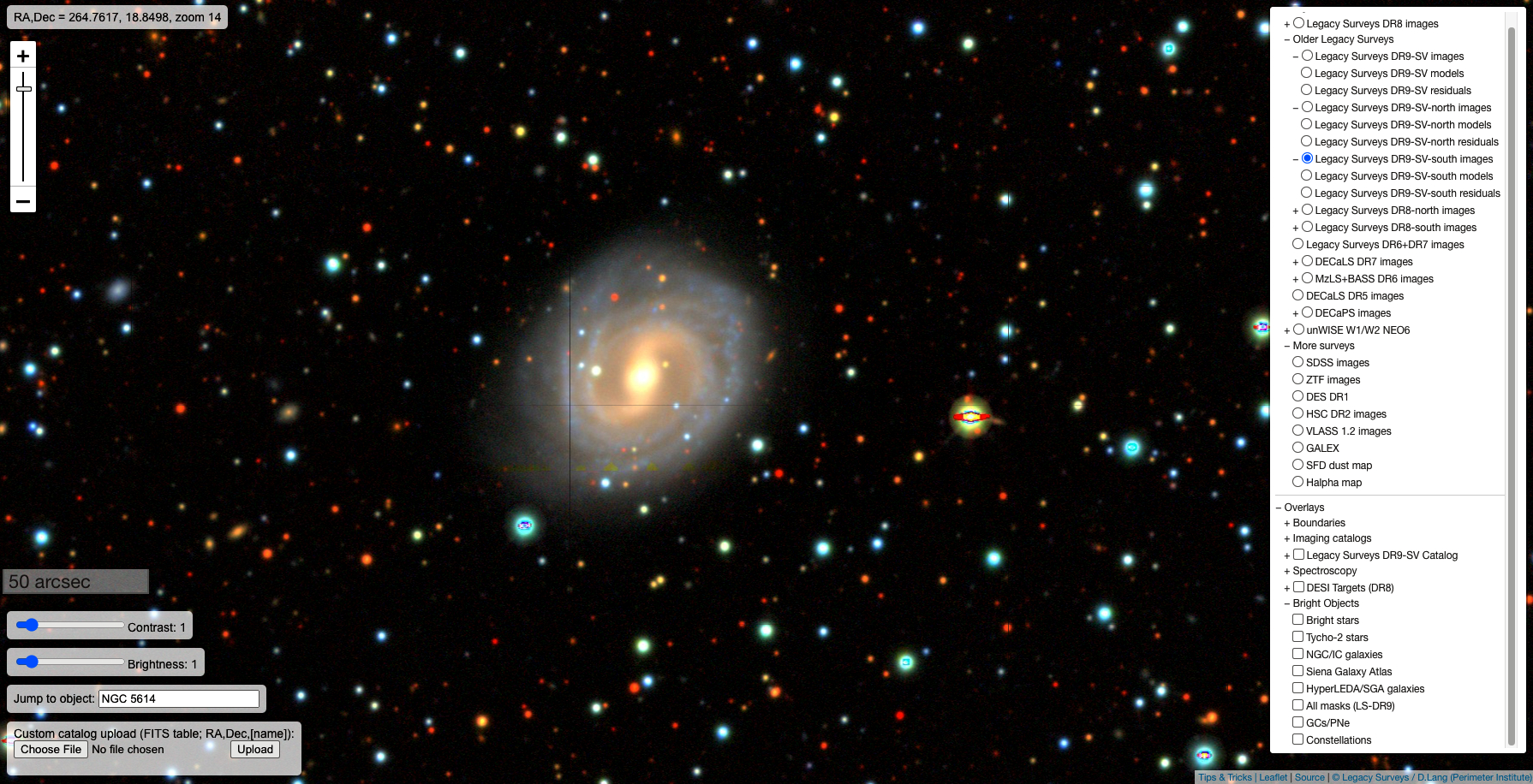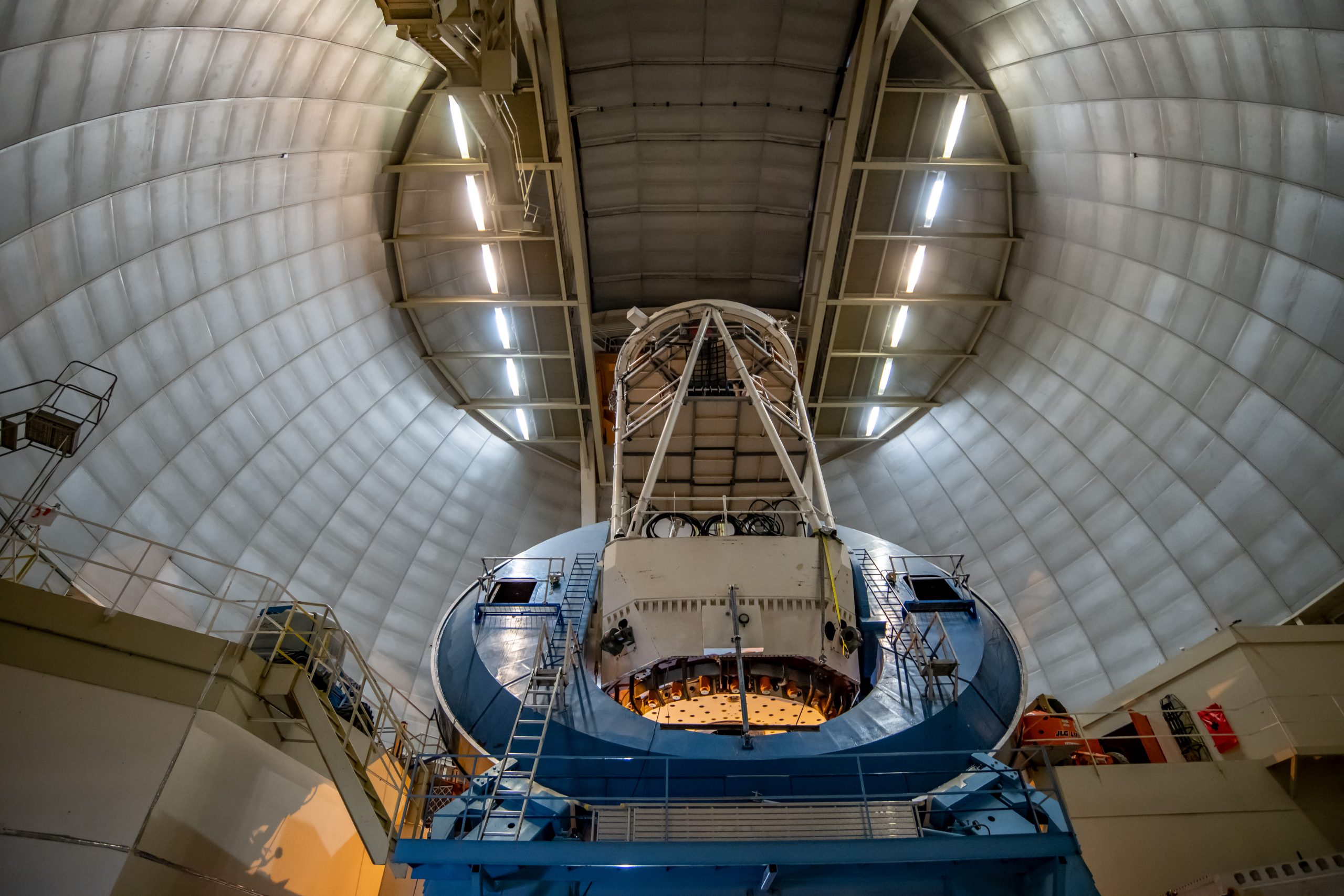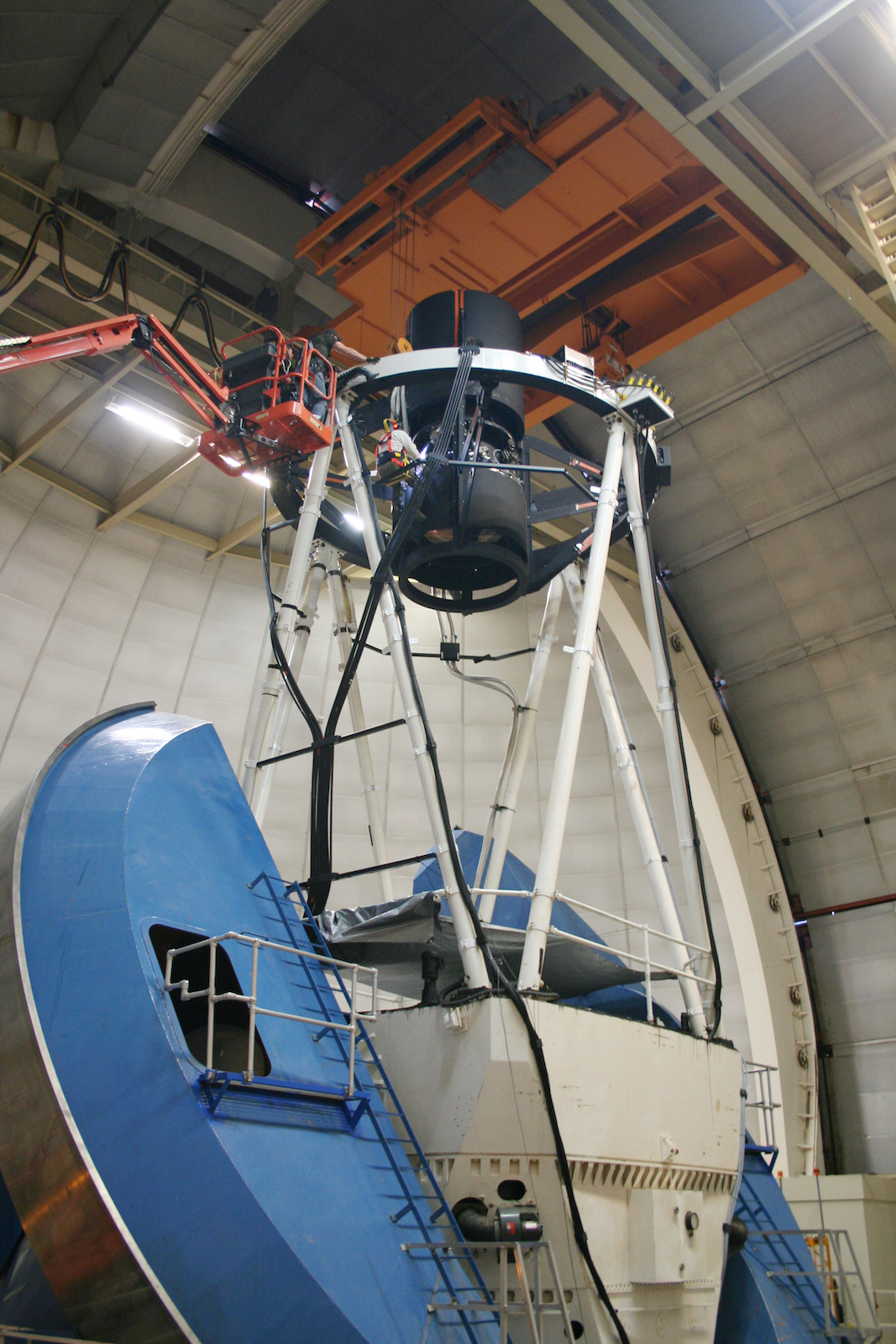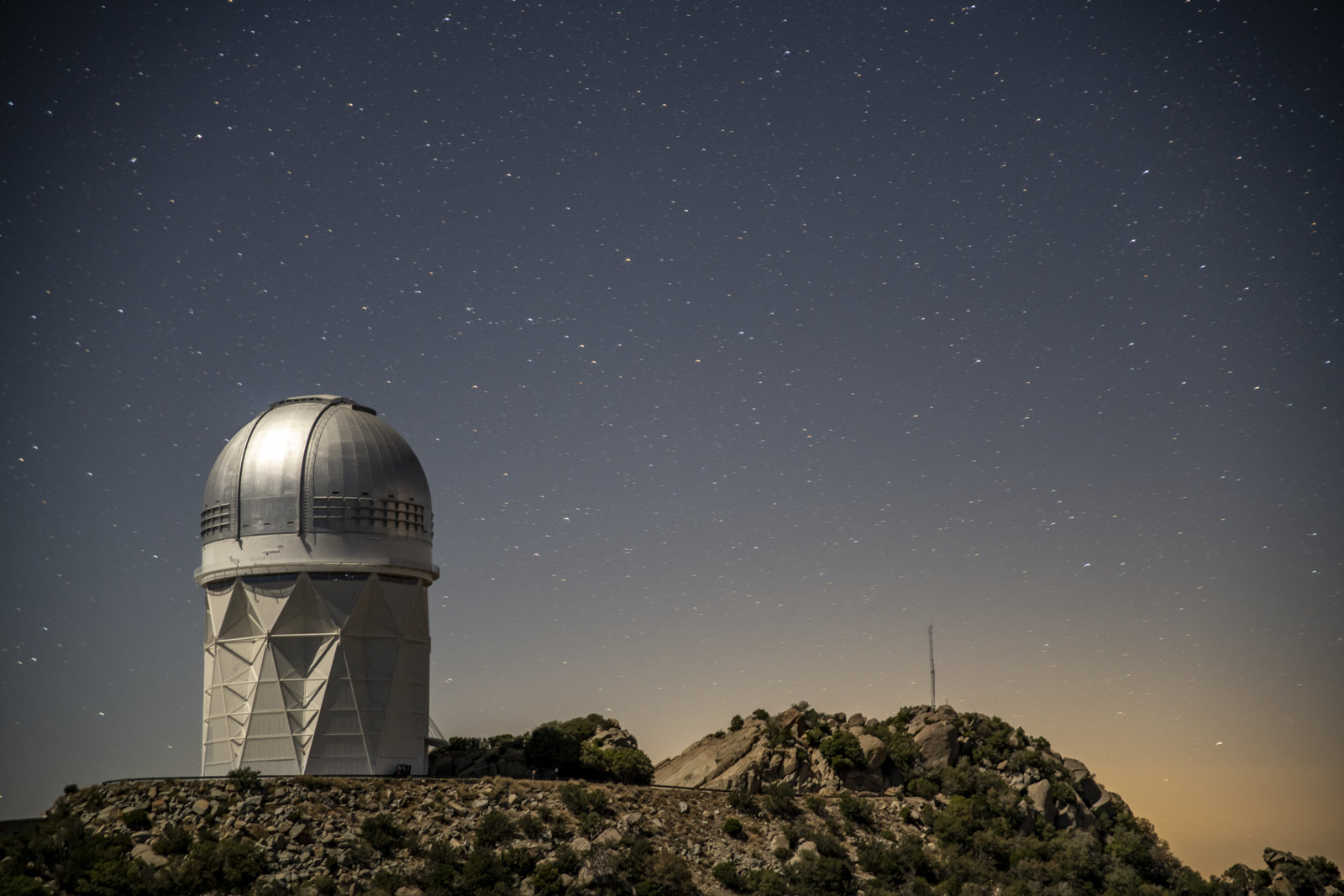Researchers at The Ohio State University played a major role in analyzing the first year of data from the Dark Energy Spectroscopic Instrument’s survey into the history of the universe.
Tag: DESI
Revelan detallada panorámica de 11 mil millones de años hacia el pasado del Universo
Astrónomos de diversas partes del mundo están realizando un análisis inicial de los datos del primer año de estudio del Instrumento Espectroscópico de Energía Oscura, que lleva a cabo un sondeo de 5 años para crear el mapa en 3D más grande que se haya hecho sobre el Universo. Utilizando el espectro de las galaxias cercanas y de cuásares distantes, los astrónomos reportaron que lograron medir la historia de la expansión del Universo con la mayor precisión jamás alcanzada, proporcionando un panorama sin precedentes sobre la naturaleza de la energía oscura y su efecto en la estructura a gran escala del Universo.
DESI Looks 11 Billion Years Into the Past to Reveal Most Detailed View Ever of the Expanding Universe
The Dark Energy Spectroscopic Instrument is conducting a five-year survey to create the largest 3D map of the Universe ever. Astronomers are now performing initial analysis of the survey’s first-year data. Using spectra of nearby galaxies and distant quasars, astronomers report that they have measured the expansion history of the Universe with the highest precision ever, providing an unprecedented look at the nature of dark energy and its effect on the Universe’s large-scale structure.
DESI Early Data Release Holds Nearly Two Million Objects
The universe is big, and it’s getting bigger. To study dark energy, the mysterious force behind the accelerating expansion of our universe, scientists are using the Dark Energy Spectroscopic Instrument (DESI) to map more than 40 million galaxies, quasars, and stars. Today, the collaboration publicly released its first batch of data, with nearly 2 million objects for researchers to explore.
Estudio registra casi dos millones de galaxias, cuásares y estrellas en su publicación preliminar
Casi dos millones de objetos, que incluyen galaxias distantes, cuásares y estrellas, se encuentran en la publicación preliminar de datos del Instrumento Espectroscópico de Energía Oscura (DESI), del Laboratorio Nacional Lawrence Berkeley, en el Observatorio Nacional de Kitt Peak, un Programa de NOIRLab de NSF. Estos datos ayudarán a los investigadores a estudiar la historia de la expansión del Universo con un detalle sin precedentes y explorar otras áreas de la investigación astrofísica de frontera. DESI es financiado por el Departamento de Energía de los Estados Unidos y administrado por el Laboratorio Berkeley.
Nearly Two Million Galaxies, Quasars, and Stars Contained in DESI Early Data Release
Nearly two million objects, including distant galaxies, quasars, and stars, comprise the early data release from the Lawrence Berkeley National Laboratory Dark Energy Spectroscopic Instrument (DESI) at Kitt Peak National Observatory, a Program of NSF’s NOIRLab. These data will help researchers study the expansion history of the Universe in unprecedented detail and explore other frontier areas of astrophysical research. DESI is funded by the US Department of Energy and managed by Berkeley Lab.
After Fire and Monsoons, DESI Resumes Cataloguing the Cosmos
In June, the Dark Energy Spectroscopic Instrument survived a massive wildfire, followed by rains and mudslides. After cleaning and testing the equipment, DESI collaborators successfully restarted the experiment and began imaging the night sky again on Sept. 10. The survey is creating the largest 3D map of the universe ever made to study a phenomenon called dark energy.
Department of Energy Announces $78 Million for Research in High Energy Physics
Today, the U.S. Department of Energy (DOE) announced $78 million in funding for 58 research projects that will spur new discoveries in high energy physics. The projects—housed at 44 colleges and universities across 22 states—are exploring the fundamental science about the universe that also underlies technological advancements in medicine, computing, energy technologies, manufacturing, national security, and more.
Science Snapshots From Berkeley Lab
These news briefs cover topics including gut microbes, tsetse flies in 3D, an energy use framework for heating and cooling, and new gravitational lensing candidates.

Building a Giant 2D Map of the Universe to Prepare for the Largest 3D Map
Before DESI, the Dark Energy Spectroscopic Instrument, can begin its 5-year mission from an Arizona mountaintop to produce the largest 3D sky map yet, researchers first needed an even bigger 2D map of the universe.

Lab Researcher and Physics Undergrad Shares Poster Project Honoring Black Physicists
Inspired by the nation’s grappling with issues of race and racial discrimination, UC Berkeley physics major and Berkeley Lab student assistant Ana Lyons turned to art as a way to contribute to the conversation.

Five thousand eyes on the skies: Scientists choreograph robots to observe distant galaxies
Scientists have begun operating the Dark Energy Spectroscopic Instrument, or DESI, to create a 3-D map of over 30 million galaxies and quasars that will help them understand the nature of dark energy. The new instrument is the most advanced of its kind, with 5,000 robotic positioners that will enable scientists to gather more than 20 times more data than previous surveys. Researchers at Fermilab helped develop the software that will direct these positioners to focus on galaxies several billion light-years away and are currently in the process of fine-tuning the programs used before the last round of testing later this year.

Now Complete, Telescope Instrument is Poised to Begin Its Search for Answers About Dark Energy
Even as the Dark Energy Spectroscopic Instrument, or DESI, lies dormant within a telescope dome on a mountaintop in Arizona, due to the COVID-19 pandemic, the DESI project has moved forward in reaching the final formal approval milestone prior to startup.

DESI Team Prepares for Telescope Instrument’s Restart after Unexpected Shutdown
Despite a temporary shutdown of the Dark Energy Spectroscopic Instrument in Arizona – which was in its final stages of testing in preparation to begin mapping millions of galaxies in 3D when the pandemic struck – a variety of project tasks are still moving forward.

Looking Up From the Mountaintop: Q&A with a Telescope Instrument’s Lead Observer
In this Q&A Satya Gontcho A Gontcho, a lead observer for the Dark Energy Spectroscopic Instrument (DESI), shares her experiences at the DESI site near Tucson, Arizona, including evening observing stints to run through detailed checklists and probe how the instrument’s components are working.